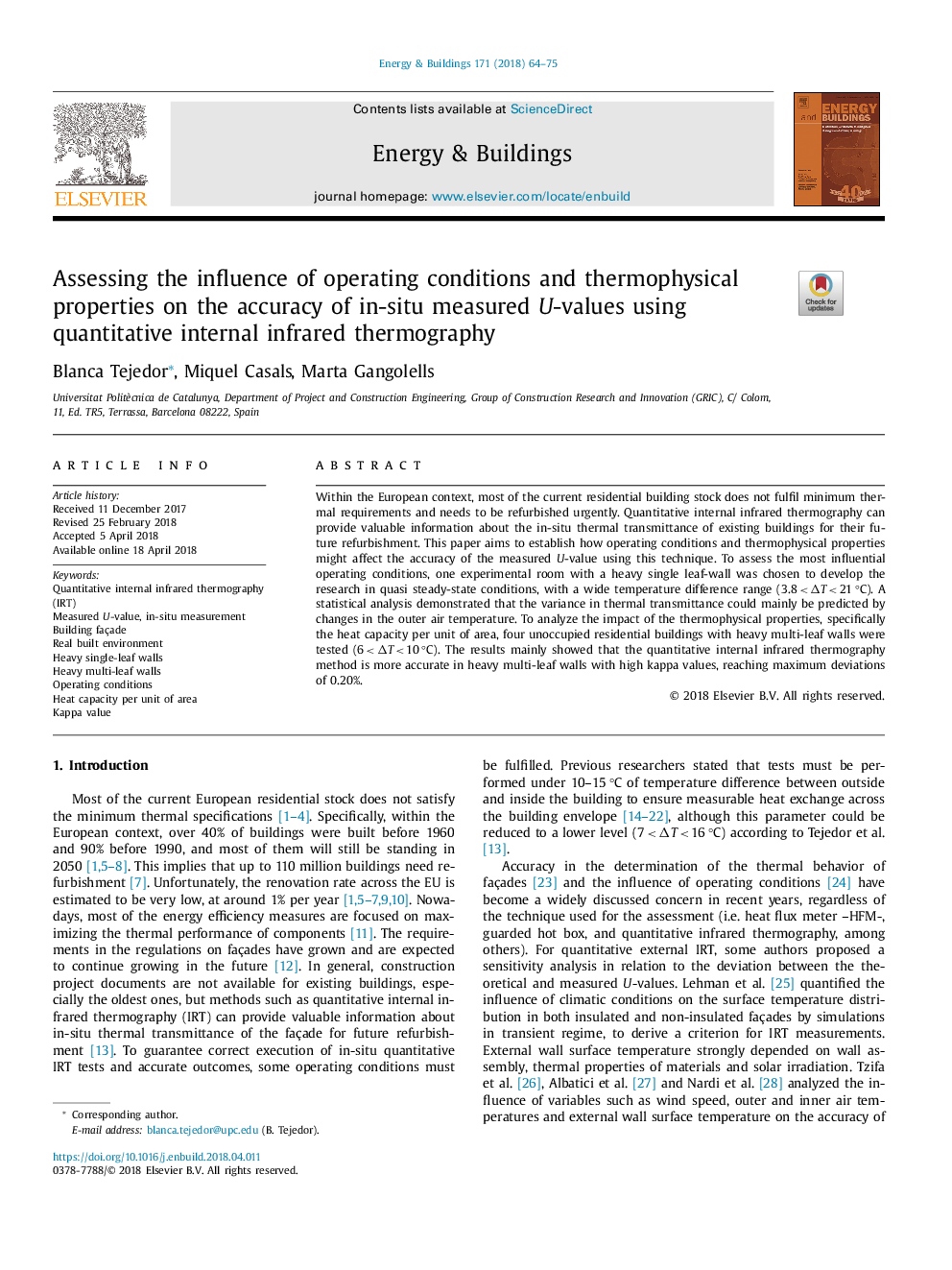| Article ID | Journal | Published Year | Pages | File Type |
|---|---|---|---|---|
| 6727637 | Energy and Buildings | 2018 | 12 Pages |
Abstract
Within the European context, most of the current residential building stock does not fulfil minimum thermal requirements and needs to be refurbished urgently. Quantitative internal infrared thermography can provide valuable information about the in-situ thermal transmittance of existing buildings for their future refurbishment. This paper aims to establish how operating conditions and thermophysical properties might affect the accuracy of the measured U-value using this technique. To assess the most influential operating conditions, one experimental room with a heavy single leaf-wall was chosen to develop the research in quasi steady-state conditions, with a wide temperature difference range (3.8â¯<â¯ÎTâ¯<â¯21°C). A statistical analysis demonstrated that the variance in thermal transmittance could mainly be predicted by changes in the outer air temperature. To analyze the impact of the thermophysical properties, specifically the heat capacity per unit of area, four unoccupied residential buildings with heavy multi-leaf walls were tested (6â¯<â¯ÎTâ¯<â¯10°C). The results mainly showed that the quantitative internal infrared thermography method is more accurate in heavy multi-leaf walls with high kappa values, reaching maximum deviations of 0.20%.
Keywords
Related Topics
Physical Sciences and Engineering
Energy
Renewable Energy, Sustainability and the Environment
Authors
Blanca Tejedor, Miquel Casals, Marta Gangolells,
